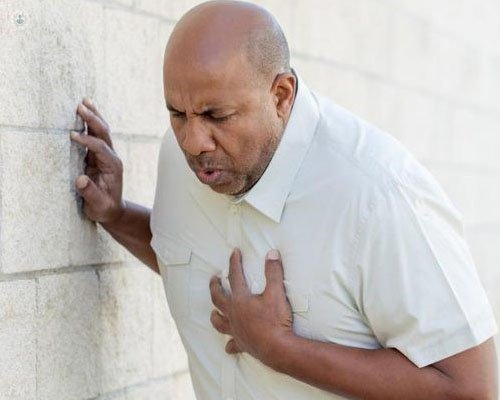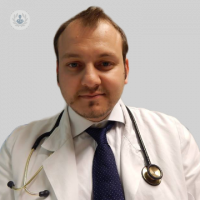What is coronary artery disease (CAD)?
Written by:Coronary arteries are the heart’s blood vessels, which fuel the heart muscle with blood and oxygen. If calcium and fat deposits build up in these arteries, the blood supply of the heart is impaired and the patient suffers from coronary artery disease (CAD). This affects the heart function and puts the patient at risk of having a heart attack.
In this article below, Dr Kristo Papa, a leading cardiothoracic surgeon, outlines some of the symptoms associated with coronary artery disease, and explains how the disease is treated.

What are the symptoms and causes of coronary artery disease?
Most patients with CAD suffer from angina, a left-sided chest pain, which often spreads to the left arm or the jaw and causes shortness of breath. In the early stages symptoms are only noticed during exercise, but over time they can also appear at restful times. In cases where the coronary arteries are blocked, patients will suffer from a heart attack.
How is coronary artery disease treated?
Patients who suffer from symptoms of CAD need to be assessed urgently to prevent a heart attack. A coronary angiography shows where the blockages and narrowings are in the arteries. If the disease is not too severe, balloons and stents can be used to re-open the arteries. If the CAD is more serious, a surgery procedure, coronary artery bypass grafting (CABG), is the preferred treatment option.
The procedure involves using other areas of the patient’s body to construct bypasses (new blood vessels for the heart), so that a normal blood supply of the heart can be re-established. As a result the patient’s pain disappears and their heart function normalises.
Are there any new procedures and treatments you would like to highlight?
Traditionally, one of the chest wall arteries was been used in combination with blood vessels from the legs to build these bypasses. However, the problem with this method is that the veins from the legs will also be affected by CAD in the years after surgery. A new surgical option, called ‘complete arterial revascularisation’, has been developed in recent years and can be applied to all patients. Bypasses are now built from arteries of the patient’s body (from the chest wall or forearm). The risks posed by heart bypass surgery are generally very low.
To schedule an appointment with Dr Kristo Papa, simply visit his Top Doctors profile today.


